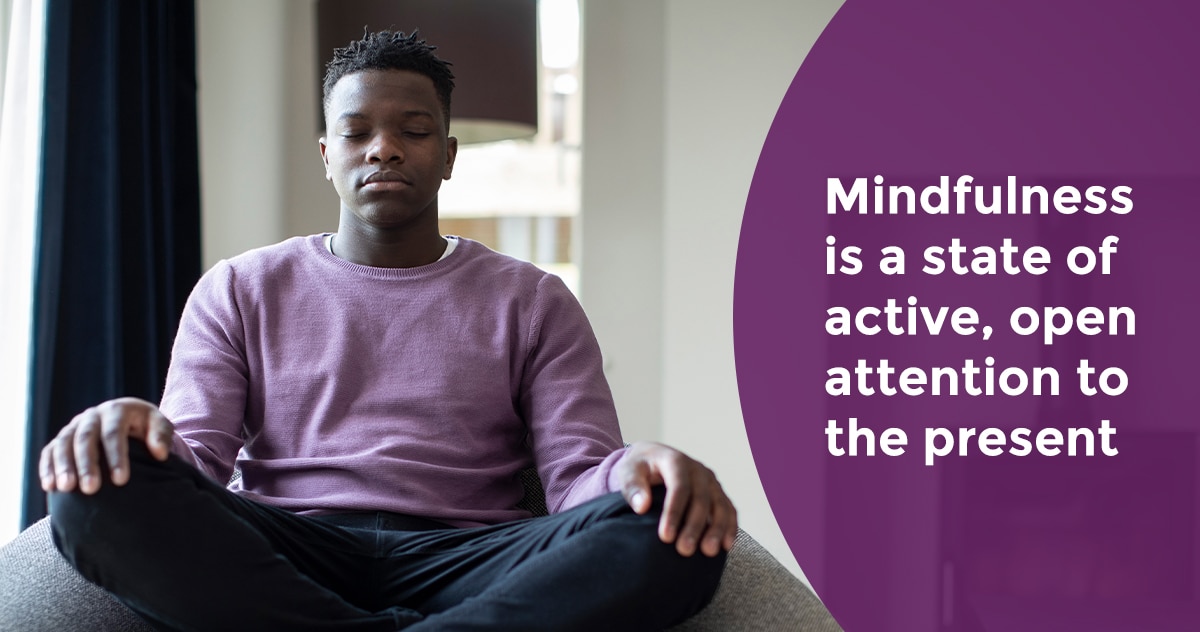Therapy has become more and more accepted today, which means that many terms used in therapy, as well as many techniques, have been seen on television, in news articles, and even on magazine covers. Many of the terms have become buzzwords that have been thrown around in everyday conversation. And many people don’t give a second thought to what the words actually mean.
One word that has recently appeared everywhere is mindfulness. It has appeared on the cover of grocery-aisle magazines. It has been the topic of many self-help books. And as of the writing of this post, there are more than 14.7 million posts on Instagram with the hashtag #mindfulness.
But what exactly is mindfulness? What are some techniques used for practicing mindfulness? And what are the benefits of mindfulness in therapy?

What is Mindfulness?
With so much talk of mindfulness, it may be difficult to hone in on a single, correct definition of the term. In fact, there really is no one definition of mindfulness and no one correct way of practicing it. Mindfulness is often defined as a state of active, open attention to the present.
Paying attention to the present moment doesn’t seem like something to be excited about, and it doesn’t seem like anything new. However, with such a broad definition of mindfulness, there are many ways that people and organizations have used the word.
In a classic therapy-based session, mindfulness can be used alongside cognitive behavioral therapy via self-reflection. The client can then use the discoveries from that self-reflection to regulate emotions caused by uncontrollable outside factors.
In religious settings, mindfulness is used as a way to connect to the present moment, but through the use of meditation on scripture.
There are many ways in which mindfulness is perceived. And just as there are many ways to define mindfulness, there are also many ways to practice mindfulness.
What are Some Techniques for Practicing Mindfulness?
There are many techniques that have been used to practice mindfulness. One example–and probably the most popular–is meditation. This is a classic way of taking time to reflect on your inner self, blocking the noise of the outside world and focusing on calmness and reflection.
If you are a spiritual person, another way you can practice mindfulness is to meditate on scripture. Think about the ways the teachings you follow are connected to your inner self.
Writing in a journal, exercising, listening to music, and anything else that will bring you to a state of calmness and reflection are all ways for you to practice mindfulness.
What are the Benefits of Mindfulness?
Mindfulness, in its simplicity, has been shown to help improve many aspects of a person’s life. The effects of mindfulness are numerous and hence the reason that it has become as popular as it is today.
Mindfulness has been used to help people of all ages, genders, and races improve emotional regulation. By taking the time to calm down and reflect, it has allowed people to focus more clearly on the way they react to situations around them.
Schools have even begun to incorporate mindfulness exercises into their curricula to help young students learn to regulate their emotions. This in turn helps them to more effectively deal with the various stressors they encounter in school and life.
Not only can mindfulness benefit one’s mental health, there are also many physical health benefits that it can bring. By calming down and letting yourself think more clearly and rationally, your stress levels will decrease. And reduced stress in your life will lessen your chance of developing high blood pressure, chronic pain, and heart disease.
If you are interested in exploring the benefits of mindfulness in therapy, give us a call. One of our therapists would be eager to help you incorporate mindfulness into your journey toward a more mentally and physically healthy lifestyle.

[…] also have the option of mindfulness therapy. The benefits of therapy are vast because it can help you to identify your own stress triggers and find solutions to ensure […]